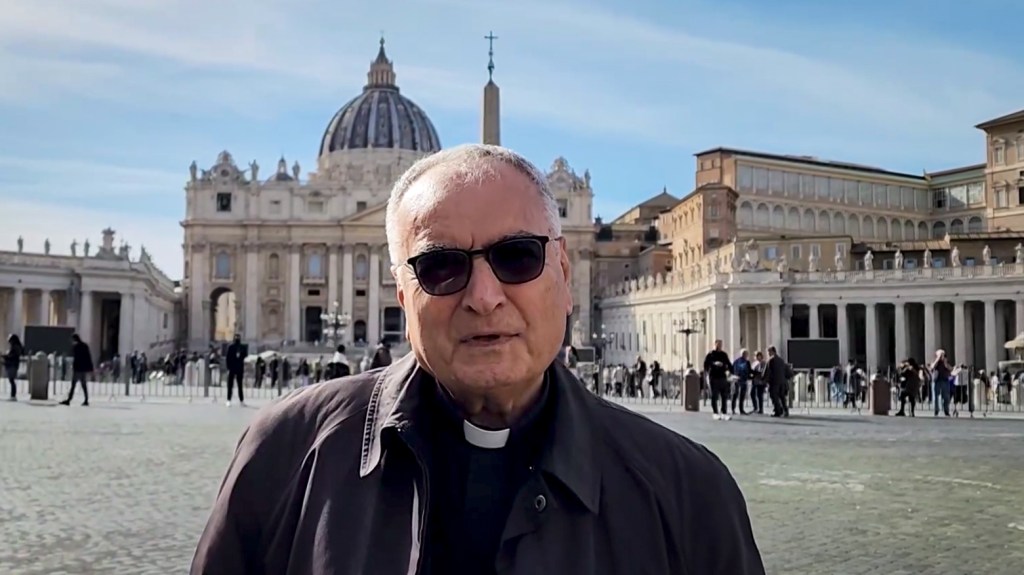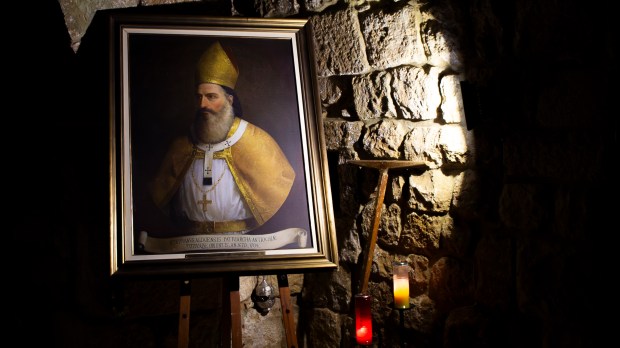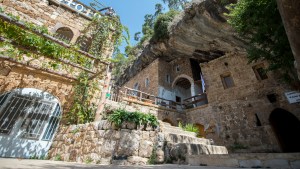On March 14, 2024, Pope Francis recognized a miracle that occurred after the intercession of Estephan El Douaihy (or Istifan al-Duwayhi), a Lebanese former Patriarch of the Maronite Church who lived from 1630 to 1704. The Pope’s recognition opened the way for him to be recognized as blessed.
Aleteia spoke to Maronite Father Paul Azzi, postulator of Patriarch El Douaihy’s cause since 2000. He said that the beatification ceremony is scheduled to take place on August 2, 2024, in Lebanon.
Father Azzi explained the impact that this Patriarch has had on Lebanese and Maronite history and why his beatification at this moment in time brings hope for Lebanon and the Middle East, in the midst of the various conflicts and crises of the region.

What are some key moments in Patriarch El Douaihy’s life?
Father Paul Azzi: Patriarch El Douaihy was born on August 2, 1630, and it was an important date because it was the feast of St. Stephen [in the Maronite Church St. Stephen’s feast day is also celebrated on August 2 due to the translation of his relics, editor’s note], so they gave him this significant name. Estephan El Douaihy lost his father when he was 3 years old and then when he was 11, in 1641, the Maronite Superiors sent him to Rome to study because he was extraordinarily intelligent.
He studied at the Gregorian University and was very good. By studying intensely, however, he started losing his eyesight, so his superiors wanted him to go back to Lebanon. However, he received a miracle from Our Blessed Mother who cured him. He prayed all night in front of Our Lady’s icon, even crying, and in the end recovered his sight and it was stronger than before. From this date we see that Our Lady was always following the Patriarch in all stages of his life.
In 1655 he got a “PhD” in Philosophy and Theology and the following year he was ordained a priest. He was then sent to Aleppo (Syria) for some time to work for Christian unity, especially with the Eastern Catholic Churches. He created a link between them and Rome. He also assisted the people who were suffering and were being persecuted under the Ottoman Empire’s rule at this time.
He then was elected Maronite Bishop of Cyprus in 1668 and two years later, at 40 years old he became Patriarch of the Maronite Church. He was very young. He led the Maronite Church as Patriarch for 34 years, which were filled with writings on science, liturgy, religion and more. That is why it took me so long to present his cause because he has written so many texts; it would take a whole life to read everything Patriarch El Douaihy has written.
In a country like Lebanon that is affected by various crises, what hope can the future Blessed Estephan El Douaihy bring to its population
Father Paul Azzi: The situation today in Lebanon and the Middle East is in darkness. The situation is very difficult in Lebanon; there is a political and economic crisis. We have in this new blessed a light from the Lord, meaning a special grace to work for peace. The greatest value we seek is peace, peace among ourselves and peace between these countries in the Middle East. The beatification is very timely, because Lebanon and the Middle East need a sign from God and this sign is the future beatification of Patriarch Douaihy.
As the Lord sends Douaihy now, in 1977 he sent the canonization of St. Charbel, in 1985 the beatification and then in 2001 the canonization of St. Rafqa, in 1998 the beatification and then in 2004 the canonization of Nimatullah Kassab Al-Hardini, the teacher of St. Charbel, and in 2010 the beatification of Brother Estephàn Nehme. We had these signs and now again God gives us this sign. The saints are not forgotten, they are present with us, it is a sign of God’s presence, that he never leaves us alone.
We hope that the Lord, with his intercession, with the intercession of Douaihy and our saints will give us this peace.
What do you think is the strongest aspect of Estephan El Douaihy’s life and witness?
Father Paul Azzi: Throughout his life his goal was holiness. Studying science for him, for example, did not have an end in itself but was a step to holiness. He is a model today for our young people because he shows that faith and science can meet in the glory of God.
He was also persecuted often; he left his Patriarchal seat several times. However, he experienced persecution as a way to consolidate his faith. Migrations for him were always a mission. So Patriarch El Douaihy’s intercession is also very important for the current time in Lebanon and the Middle East to have peace.
He is also a great man and remains an example for our priests, our parishes, and especially the patriarchs. Douaihy was the 57th Maronite Patriarch, today the current one, His Eminence and Beatitude Cardinal Béchara Raï, is the 77th.
What was Patriarch El Douaihy‘s contribution to the Maronite Church?
Father Paul Azzi: He rebuilt the Maronite Church from the point of view of the liturgy, the celebration, the hymns, and other reforms. One of his secretaries, after he became Patriarch, wrote that he was like “an eagle that flies, that brings up all the other birds.” In the history of the Maronite Church, Patriarch El Douaihy is an important reference point. We talk about a before and an after him in the Maronite Church.
What miracle was recognized that opened the war for Patriarch El Douaihy’s beatification?
Father Paul Azzi: There was a woman who was struggling, she had a disease called seronegative polyarthritis [a disease causing pain and swelling in the joints, editor’s note]. She could neither walk nor move; she always had to be helped by her family.
After she went to many hospitals and had many clinical tests done, they found out that this disease lasts for life. On September 7, 2013, they went to Ehden, [birth place of Patriarch Douaihy, editor’s note] to pray for her healing, together with some members of the Fraternity of the Immaculate Conception.
They met in front of Douaihy’s statue and prayed the rosary and had coffee afterwards. The sick woman was given coffee with a bit of soil taken from underneath the statue of the Patriarch. She immediately felt an extraordinary strength and her body felt very hot and she wanted to get up.
The first time she fell down, but she told others not to help her. The second time she got up and then walked 1,500 meters [a little under a mile, editor’s note] to her sister’s house to tell her that she was healed. Then she went back to the statue and thanked the Lord and Patriarch Douaihy’s intercession for this amazing event. It was like the story of the paralytic in the Gospel : “Rise, pick up your stretcher and go home.” She got up and was no longer in pain. Now she is well and is working and is in good health.
Where does this tradition of stirring soil into coffee come from?
Father Paul Azzi: This is a Lebanese custom. People often take soil from the places of saints like from the tomb of St. Charbel or St. Rafqa for example. They take it for their sick and put it either in water or in coffee. So many miracles and extraordinary healings have been achieved. It is not a new custom but with Douaihy it was the first time there was a healing like that.
Where and when will the beatification be celebrated ?
Father Paul Azzi: God willing it will be on August 2, 2024, at 6:30 p.m. in the Patriarchal Seat of the Maronites in Bkerké north of Beirut. The prefect of the Dicastery for the Causes of Saints, Cardinal Marcello Semeraro, and his office head should be there.
We thank the cardinal and his staff and the dicastery, we thank the Holy Father, and we thank everyone who prayed that this process could continue successfully. We also call all the Lebanese who are abroad to come to the beatification!
You can visit his incredible monastery in the Holy Valley of Lebanon here:


